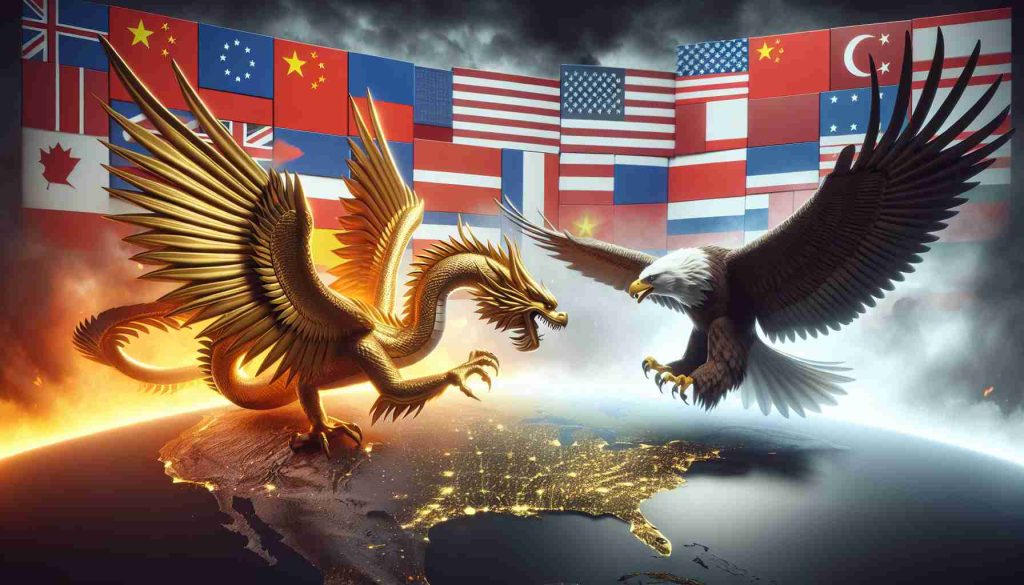- The trade battle between the U.S. and China escalates as China imposes counter-tariffs on U.S. goods.
- China views the U.S. tariffs as violations of World Trade Organization regulations.
- Starting February 10, China will impose various tariffs on U.S. coal, natural gas, crude oil, and agricultural machinery.
- China has introduced export controls on critical rare metals, citing national security concerns.
- The trade conflict poses significant risks for both countries and the global economy.
- There is an urgent need for diplomacy and dialogue to prevent further escalation.
The simmering tensions between the United States and China have just erupted into a fierce trade battle, with China launching sharp counter-tariffs on U.S. imports. Following President Trump’s decision to impose a 10% tariff on Chinese goods, Beijing responded swiftly and decisively, asserting that the U.S. action violates World Trade Organization regulations.
China’s Finance Ministry wasted no time in declaring their position, highlighting that a trade war leaves no victors in its wake. In a strong message, officials hinted that further retaliatory measures could be on the horizon, urging cooperation instead of conflict.
The countermeasures are bold and extensive. Starting February 10, China will impose a 15% tariff on U.S. coal and liquefied natural gas, alongside a 10% tariff on crude oil, large agricultural machinery, and high-displacement vehicles. But that’s not all—China has also enacted stringent export controls on critical rare metals, citing national security.
As the two economic giants clash, the ramifications for global markets and industries could be seismic. Both nations risk deepening their economic woes if diplomacy doesn’t prevail.
The key takeaway: The ongoing trade war showcases the fragility of international relations and emphasizes the urgent need for dialogue. In a world where economic ties are interwoven, each measure taken has far-reaching consequences. Will cooler heads prevail, or are we witnessing the dawn of a more prolonged and damaging conflict? Stay tuned.
The Great Trade War: What You Need to Know About the US-China Tensions
The Current Landscape of US-China Trade Relations
The trade battle between the United States and China has escalated significantly, taking center stage in international economic discourse. As of now, many analysts are scrutinizing the potential consequences of each country’s actions on global markets, while businesses are grappling with supply chain uncertainties.
# Recent Developments
Recently, updated reports indicate that trade tensions have not only persisted but have also evolved beyond tariffs. Other measures include financial sanctions, technology bans, and a focus on reshoring manufacturing as part of national strategies.
– Tariffs Imposed: In addition to the tariffs on coal and liquefied natural gas, the US has also proposed tariffs on consumer electronics, further straining relations.
– Rare Earth Metals: China’s control over rare earth metals, critical for electronics and renewable energy technologies, has raised concerns; the US has begun seeking alternative suppliers.
Key Insights and Features of the Trade Conflict
– Market Forecasts: Experts estimate that if the trade war continues unchecked, it could lead to a reduction in global GDP by up to 1.5% in the next year.
– Sustainability Impact: The tariffs on renewable energy technologies may hinder US efforts to address climate change, delaying critical green initiatives.
– Consumer Impact: Rising prices on imported goods can lead to inflation spikes, directly impacting American consumers.
Common Questions About the US-China Trade War
1. What are the long-term implications of the US-China trade war on global trade?
– The trade war may lead to increased protectionism globally, causing nations to rethink their trade relationships and potentially decouple from heavily reliant supply chains.
2. How are businesses adapting to these trade tensions?
– Many companies are diversifying their supply chains, increasing domestic production, and exploring alternative markets to mitigate risks associated with tariffs and trade barriers.
3. Will diplomatic efforts resolve the trade conflict?
– While negotiations are ongoing, the complex political landscape suggests that immediate resolutions may be elusive. However, sustained dialogue is crucial to prevent further escalation.
Pricing and Market Trends
– Impacts on Pricing: The imposition of tariffs is expected to translate into higher consumer prices for goods ranging from electronics to groceries as businesses pass on costs.
– Market Trends: Industries focused on technology and renewable energy are particularly susceptible, as they often rely on imports from China for critical components.
Innovations and Security Aspects
– Technological Competitiveness: The trade war has prompted both nations to invest heavily in domestic industries, particularly in technology and innovation sectors.
– Cybersecurity Concerns: Heightened tensions have also led to increased scrutiny over cybersecurity, with both countries accusing each other of engaging in malicious cyber activities.
Suggested Related Links
US-China Trade Tensions Overview
BBC Reporting on Trade Impacts
Forbes Insights on Trade War
—
This trade conflict serves not only as a battleground for tariffs but as a broader indicator of shifting economic relations in the 21st century. As both nations navigate this tumultuous landscape, the outcome will have significant repercussions not just for them, but for economies worldwide.
